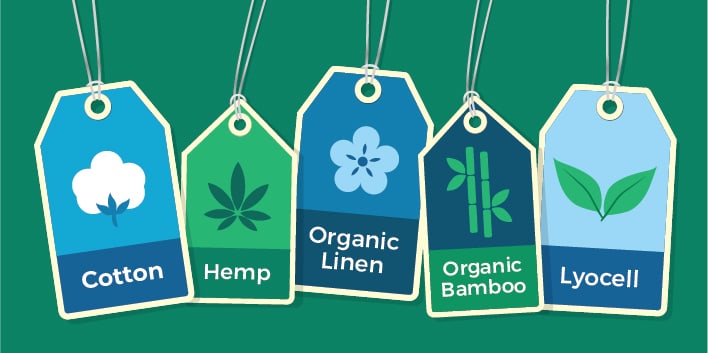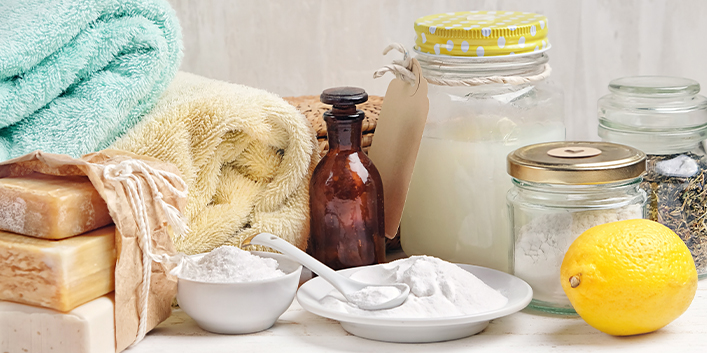Green Mountain Energy® Blog
5 of the Most Sustainable Fabrics for a Green Lifestyle



You’re making great strides towards greening your lifestyle: you have a clean energy plan, make your own compost and even drive an EV. Next up on your sustainability journey — greening your wardrobe and home. From the living room to your closet, we’ve got five sustainable fabrics to consider when giving your home and wardrobe a subtle, ecofriendly update.
But before we jump right in, we’ll preface this by saying, there’s no such thing as a 100% sustainable fabric. However, some are greener than others. So there’s no need to rid yourself of everything, take baby steps. A good start might be to replace worn pieces with eco-friendlier options. Keep in mind that sustainable fabrics are biodegradable, contain natural fibers, require little to no pesticides, and are machine washable.
As a rule of thumb, fabrics that need to be dry cleaned or that are chemically treated are not sustainable. You’ll soon discover that all cotton isn’t created equal either.
- Cotton: It may be the fabric of our lives, but in its conventional form, cotton has its issues. For one, it bears a large water footprint that often becomes polluted with chemicals and dyes in production. In fact, it takes more than 2,700 liters of water to produce the cotton that makes one cotton tee. Organic cotton, on the other hand, uses far less water to produce and is grown without harmful pesticides and chemicals. Recycled cotton, made up of fabric scrap or second-hand clothing waste, eliminates the excessive water issues associated with cotton, and is arguably the best contender of the three.
- Hemp: Known as one of the most eco-friendly natural fabrics around, Hemp dates as far back as 8,000 B.C. Unlike cotton, it requires little to no pesticides to grow, and has the same look and feel as linen. It’s a cheaper alternative to cotton and is also soft to touch. Because of its natural resistance to pests, hemp is high yielding in growth and is healthy for soil. It’s also known to be a carbon-negative raw material that absorbs carbon dioxide from the atmosphere.
- Organic Linen: Organic linen and hemp have very similar properties. They’re both lightweight and breathable with the primary difference being that linen comes from the flax plant. The hollow flax fiber that linen is made from also helps to regulate body temperatures— it keeps you cool in the summer and warm in the winter. Linen thrives with very little irrigation, pesticides or fertilizer. And unlike hemp, it isn’t a high-yielding crop, and is more expensive. Its hypoallergenic and antibacterial properties make it a great choice for sensitive skin.
- Organic Bamboo: Bamboo is one of the fastest growing plants in the world and is considered 3-4 times more absorbent than cotton and has a softer feel. It replants itself and produces 35% more oxygen and absorbs five times more carbon than other types of trees. Bamboo is another one of those plants that doesn’t require pesticides, fertilizer or irrigation. Certified organic bamboo ensures that it’s grown in an environmentally responsible way. In addition to sheets, bamboo towels and bathrobes are highly sought after.
- Lyocell: Lyocell is a plant-based fiber made from semi-synthetic regenerated cellulose fiber and is manufactured from wood pulp. It is lightweight, breathable and a durable, soft fabric. It has moisture-wicking properties to keep you dry and cool in warmer weather and repels odors for a longer period than cotton does. Fashion brands are now looking to lyocell as the fabric of choice, and it’s the third most used man-made cellulosic fiber. It is often used for making eco-friendly dress shirts, towels and underwear.
Clothing is responsible for 3-6% of human produced carbon-emissions, according to ecostylist.com. This includes fabric production and doing laundry. Read our blog There’s an Eco-Friendlier Way to Do Your Laundry for tips on washing. Remember, the best sustainable fabrics are pesticide free, focus on recycling and reduce water waste. When you choose sustainable fabrics, you’re minimizing the overall damage caused to the environment. So, the next time your home or closet needs an update, consider shopping for eco-friendly clothes or sustainable furniture and you’ll be doing yourself and the planet a favor.
Wondering what to do with the preloved items you’re replacing for eco-friendlier options? Consider donating to a local nonprofit like the Houston Furniture Bank, a grant recipient of our nonprofit Sun Club®, that accepts gently used furniture and offers both pick-ups and drop-off services. Outside of the Houston area? Goodwill, The Salvation Army and Habitat for Humanity, all offer pick-up and drop-off services as well. Be sure to check each organization’s donation guidelines to ensure eligibility.
Find a renewable energy plan that helps your home go green.
Enter your ZIP code to get started.
Our customers have avoided
pounds of CO2
That’s like planting
new trees.





